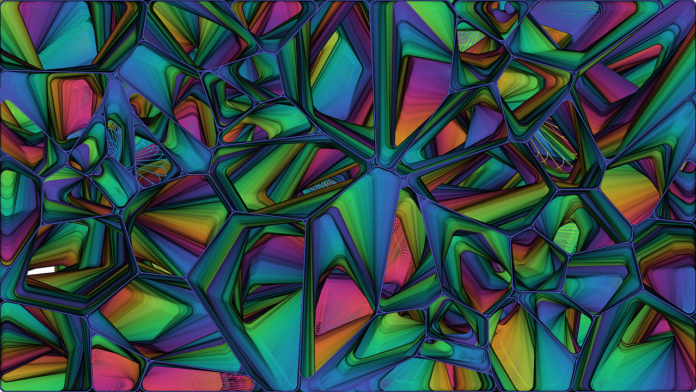Graph Neural Networks (GNNs) represent a powerful paradigm in machine learning, specifically tailored to address problems involving graph-structured data. The essence of Graph Neural Networks lies in their ability to capture and leverage the intricate relationships and dependencies inherent in graph data. Whether modeling social networks, molecular structures, or citation networks, GNNs have demonstrated remarkable effectiveness in a wide array of applications. This comprehensive exploration delves into the intricacies of Graph Neural Networks, elucidating their fundamental principles, architectural components, and the diverse spectrum of domains where they have made significant strides.
Graph Neural Networks, at their core, are designed to process and understand graph-structured data, which is prevalent in various domains. A graph is a mathematical representation of a set of entities, often referred to as nodes, and the connections between them, known as edges. These nodes and edges encode valuable information about relationships, dependencies, or interactions between entities, forming a rich tapestry of interconnected data. GNNs are adept at extracting meaningful patterns and representations from this intricate web of relationships, enabling them to uncover hidden insights and make predictions in a wide range of scenarios.
The architecture of Graph Neural Networks can be conceptualized as a series of layers, each responsible for capturing and refining information about the nodes and edges in the graph. At the heart of a GNN is the ability to iteratively update node representations based on both their own attributes and the information from neighboring nodes. This recurrent update mechanism allows GNNs to propagate information across the entire graph, progressively enhancing the understanding of each node’s context within the broader structure. This iterative refinement process is fundamental to the success of GNNs in modeling complex relationships in diverse datasets.
Graph Neural Networks have found widespread application in social network analysis, where the nodes represent individuals, and edges signify relationships between them. In this context, GNNs excel at capturing the subtle nuances of social interactions, identifying influential individuals, and predicting connections that are likely to form. Furthermore, GNNs have made significant contributions to the field of recommendation systems, where the goal is to suggest items or content to users based on their preferences and behaviors. By leveraging the relational information encoded in graphs, GNNs enhance the accuracy and relevance of recommendations, offering a more personalized and effective user experience.
The success of Graph Neural Networks can be attributed to their adaptability across various domains. In molecular chemistry, GNNs have emerged as a powerful tool for predicting molecular properties and exploring chemical spaces. The nodes in this context may represent atoms, and the edges denote chemical bonds between them. By learning from the structural patterns of known molecules, GNNs can generalize their knowledge to predict the properties of unseen molecules, revolutionizing drug discovery and materials science. This ability to handle diverse graph structures underscores the versatility of GNNs in addressing complex problems across disciplines.
Graph Neural Networks have also made significant strides in the realm of natural language processing (NLP). Language, when represented as a graph, exhibits intricate relationships between words and phrases. GNNs have been employed to capture these syntactic and semantic dependencies, enhancing the understanding of contextual information in text data. Applications range from document summarization and sentiment analysis to question answering systems, where GNNs contribute to a more nuanced and context-aware interpretation of language. This intersection of graph-based representations and natural language understanding showcases the broad applicability of GNNs in extracting meaningful insights from diverse data modalities.
The integration of Graph Neural Networks with spatial data and imagery has yielded breakthroughs in computer vision tasks. Image data, when represented as a graph, allows GNNs to model the relationships between pixels or regions effectively. This capability has been leveraged for tasks such as image segmentation, object detection, and scene understanding. By incorporating spatial dependencies through graph-based representations, GNNs enhance the contextual awareness of computer vision models, enabling them to discern complex patterns and relationships within images. This convergence of graph-based reasoning and computer vision exemplifies the cross-disciplinary impact of Graph Neural Networks.
Graph Neural Networks have evolved through various architectural enhancements and innovations. Graph Convolutional Networks (GCNs), a prominent subclass of GNNs, introduced the concept of convolutional operations on graphs, inspired by their success in image processing tasks. GCNs leverage the local neighborhood information of nodes to perform convolution-like operations, allowing them to capture hierarchical features and dependencies in graph-structured data. This architectural advancement has been pivotal in improving the expressive power of GNNs and has become a cornerstone in the development of more sophisticated graph-based models.
Graph Neural Networks have further extended their capabilities with attention mechanisms, which enable models to selectively focus on relevant parts of the graph during information propagation. Attention mechanisms facilitate more nuanced reasoning by assigning varying levels of importance to different nodes and edges. This adaptability to dynamically attend to specific regions of the graph enhances the model’s ability to capture intricate patterns and dependencies, leading to improved performance in tasks such as node classification, link prediction, and graph generation. The incorporation of attention mechanisms exemplifies the continuous refinement of GNN architectures to meet the evolving demands of complex data scenarios.
In the context of reinforcement learning, Graph Neural Networks have demonstrated their prowess in handling environments with structured dependencies. The nodes in the graph may represent different states, and the edges denote transitions between states. GNNs can effectively capture the temporal dependencies and relationships between states, enabling them to make informed decisions in sequential decision-making tasks. This application of GNNs in reinforcement learning highlights their versatility in addressing challenges beyond static graph-structured data, paving the way for advancements in autonomous systems and robotic control.
The interpretability and explainability of Graph Neural Networks have become crucial considerations as these models find their way into real-world applications. Understanding the decision-making process of GNNs is essential for building trust in their predictions, especially in domains with significant consequences, such as healthcare or finance. Efforts to enhance the interpretability of GNNs include developing attention mechanisms that provide insights into which parts of the graph contribute most to a particular prediction. Additionally, techniques for visualizing and analyzing the learned representations enable practitioners to gain a deeper understanding of the knowledge encoded within GNNs, fostering transparency and accountability in their deployment.
In conclusion, Graph Neural Networks represent a transformative paradigm in machine learning, tailored to navigate the intricacies of graph-structured data. Their ability to capture complex relationships, model dependencies, and adapt to diverse domains has positioned them as a versatile tool in the modern machine learning toolkit. From social network analysis and recommendation systems to molecular chemistry and computer vision, Graph Neural Networks have demonstrated their prowess across a myriad of applications. As research and innovation in this field continue to evolve, Graph Neural Networks are poised to play an increasingly pivotal role in addressing the challenges of an interconnected and data-rich world














